4/2010
Class 395 - Britain's First Domestic 225 km/h EMU
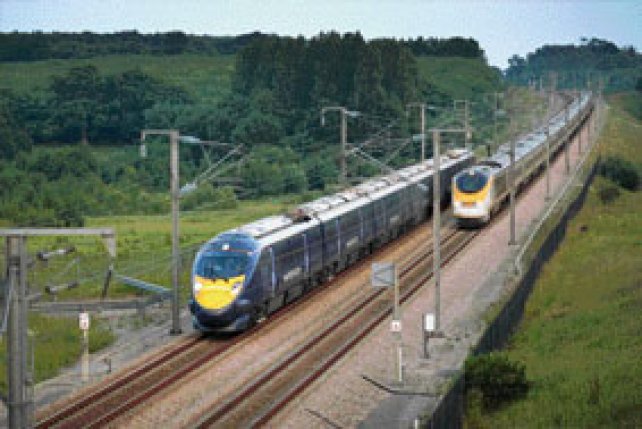
Southeastern's 29 Class 395 EMUs have now been in service between London St. Pancras International and towns and cities in East Kent for over a year, and these Hitachi-built 225 km/h trains have acquitted themselves well, offering substantial reductions in journey times and opening up some useful new travel possibilities for rail passengers living south of the Thames estuary.
One of several parallel running tests to check if there was any electrical interference between the Class 395s (395001 was used here) and the Eurostar Class 373s. These tests took place late in the evening and at night, and this photo was taken at Beechbrook Farm 2 minutes after sunset on 8 June 2008.
Photo: Alan Crotty
Presenting The Vectron Family
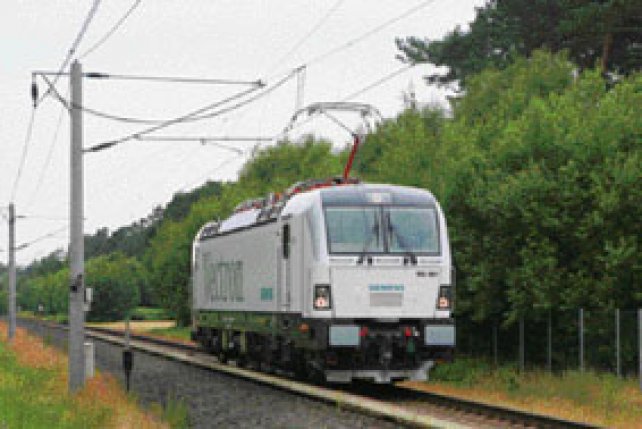
On 29 June 2010 the first two prototype Vectron electric locomotives built by Siemens made their public debut at the manufacturer's Wegberg-Wildenrath test circuit. That day the media were invited to inspect them, and on the 30th the machines were viewed by guests from the railway industry and by potential future clients.
193 901 and 193 921 left their München-Allach birthplace on 19 and 26 June respectively, and were thus able to realise a number of test runs prior to the presentation event. 193 901 is a quadruple-voltage machine, while 193 921 is dual-voltage (15 and 25 kV AC), and both are rated at 6,400 kW.
Photo: Ing. Petr Kadeřávek
Czech Raildays 2010
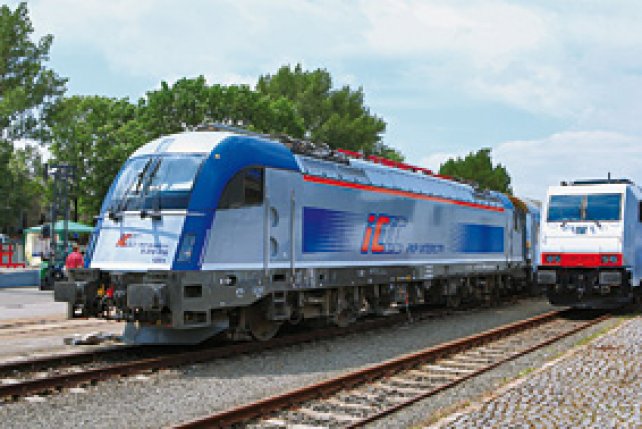
The eleventh edition of the Czech Raildays international trade fair was held in Ostrava between 15 and 17 June 2010. As in previous years, there was a huge range of modern products - components and vehicles - on display. The scope of Czech Raildays embraces not only rail vehicles, but also trolleybuses and urban bus types. In 2010, as the event entered its second decade, there were 156 exhibitors, and over 6,300 trade visitors, succinctly demonstrating the great interest shown in it by transport operators and manufacturers.
Three Siemens locomotives were present. PKP Intercity’s Husarz 5 370 008 attracted a good deal of attention, being situated right at the front of the outdoor exhibition area. This was an appropriate exhibit, since only a few weeks had elapsed since the Version D Eurosprinter had received authorisation for use in the Czech Republic and had celebrated this fact by working expresses from Warszawa to nearby Bohumín (see R 3/10, p. 56).
Photo: Tomáš Kuchta
New Family Of Centre-Cab Locomotives: Efficient, Powerful, And Future Proof
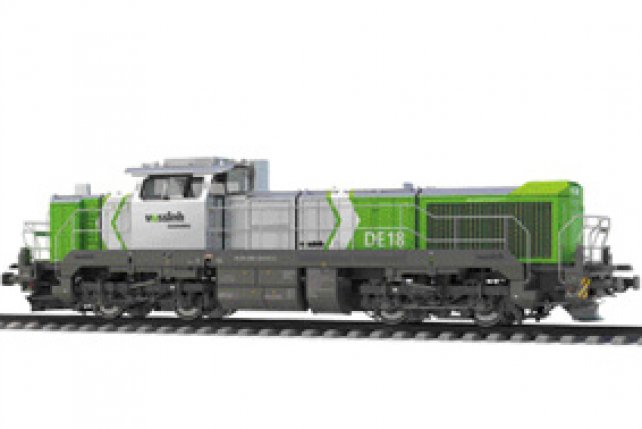
Vossloh Locomotives will be phasing out its present product range in 2011, to be replaced by a newly engineered family of locomotives. The first member, the three-axle G 6 shunter (see R 2/09, pp. 48 - 50), was presented in 2008. Four four-axle models will join and complete the line-up by 2012. The five family members will comply with all existing and pending international codes and standards regarding exhaust emission control, safety, noise abatement, fire prevention, and soft-ware. The traction equipment is engineered to allow a maximum operating speed of 120 km/h.
In the development of the diesel-electric models (the picture shows the DE 18), Vossloh has assigned utmost priority to high dependability and future-proof features. For example, the manufacturer guarantees a 30-year availability for all electrical parts.
Photo: Vossloh
SKF Expands Presence In Russia
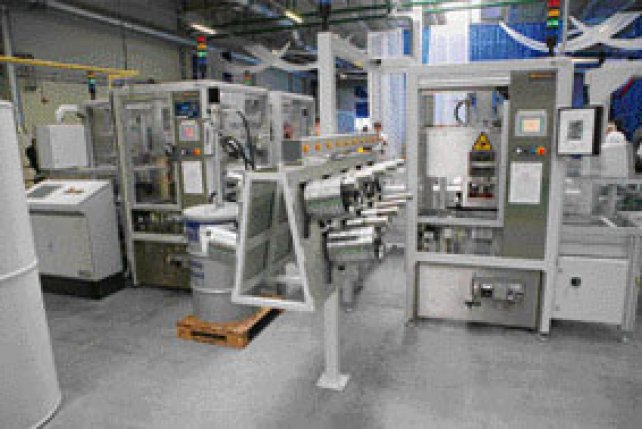
SKF inaugurated its new factory in Tver, about 150 km north-east of Moskva, on 8 July 2010 - 94 years after the company first started manufacturing bearings in Russia.
Operators of the phosphating line are waiting for the first inner rings and outer rings from the grinding line after ribbon cutting to place them
on the conveyer for phosphating. Phosphating treatment prevents the bearings from corrosion.
Photo: Ing. Petr Kadeřávek
The Second UIC Global Railfreight Conference
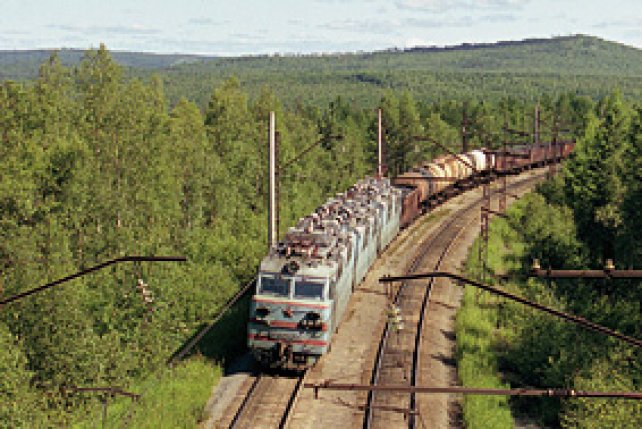
This event took place in St. Petersburg on 6 and 7 July 2010, organisation being handled jointly by the UIC and RZD under the patronage of the United Nations Economic Commis-sion for Europe and the Russian Ministry for Transport. Many international organisations - OTIF, OSJD, AAR, BIC, CER, CIT, EIM, FIATA, UIRR, UNIFE and EIA - were involved.
In the photo we see a typical Trans-Siberian freight, here headed by VL80-1030, which is boosted by a third locomotive section of the latter class, the photo taken near Irkutsk.
Photo: RZD
Talgo - Even Greater Interoperability
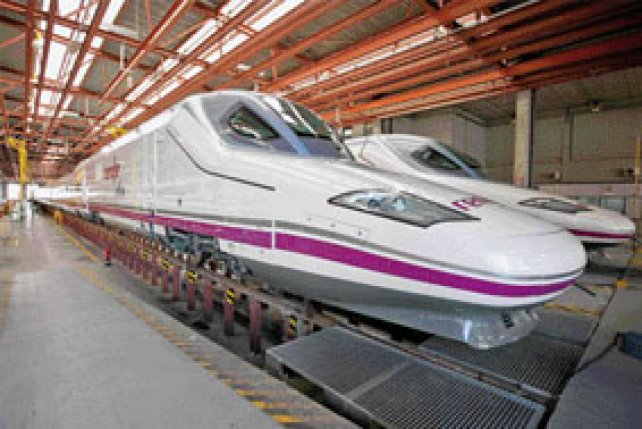
A version of the variable-gauge T250 capable of operating on electrified and non-electrified lines, the Class 112 evolution of the T350, the 380 km/h AVRIL, and a variable gauge train capable of 300 km/h operation. Four of the latest projects initiated by this well-known Spanish manufacturer...
A pair of Class 112s on 29 June 2010 at Santa Catalina depot, near Madrid-Atocha station.
Photo: Ministerio de Fomento
And much more!
Cover of 4/2010
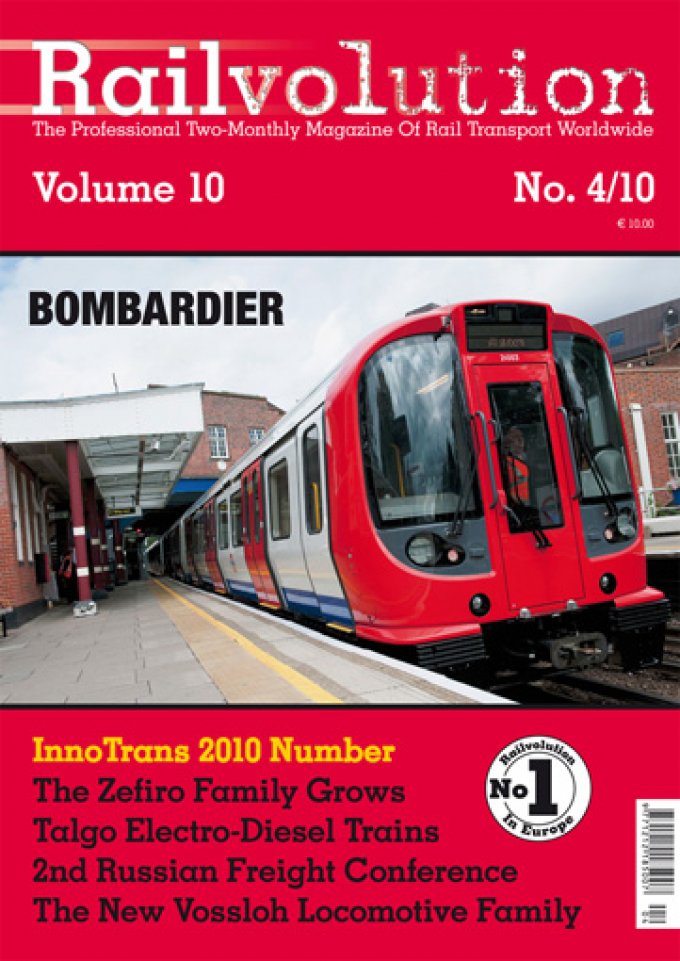
Poster
Features: Gravita 10 BB, from Voith Turbo Lokomotivtechnik, with 1,000 kW diesel engine output for shunting duties and light distribution traffic.
